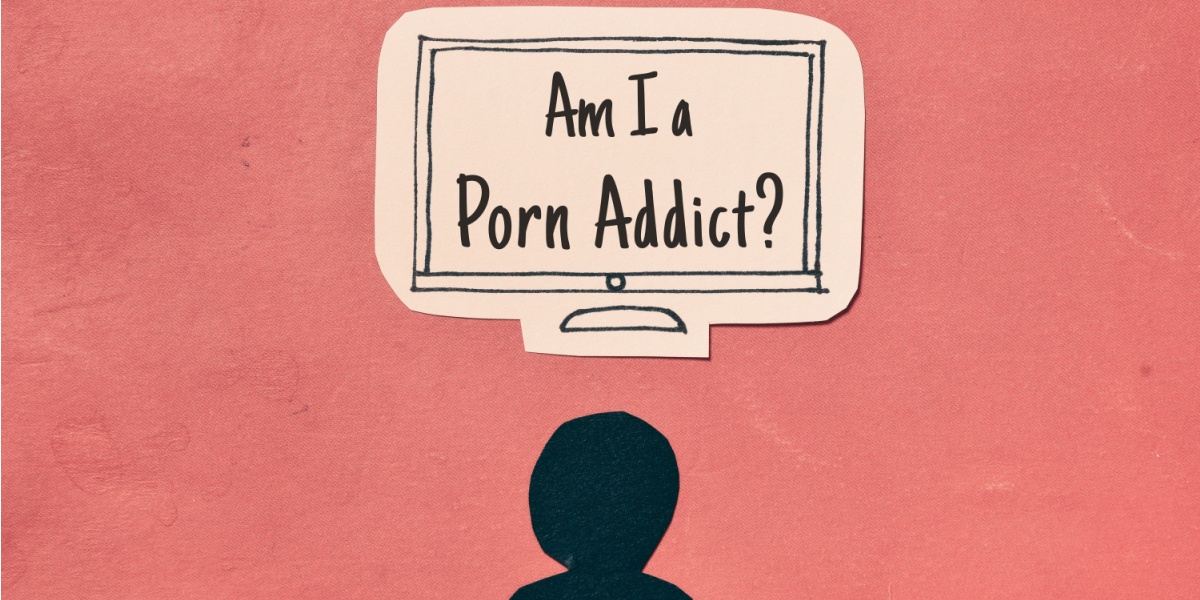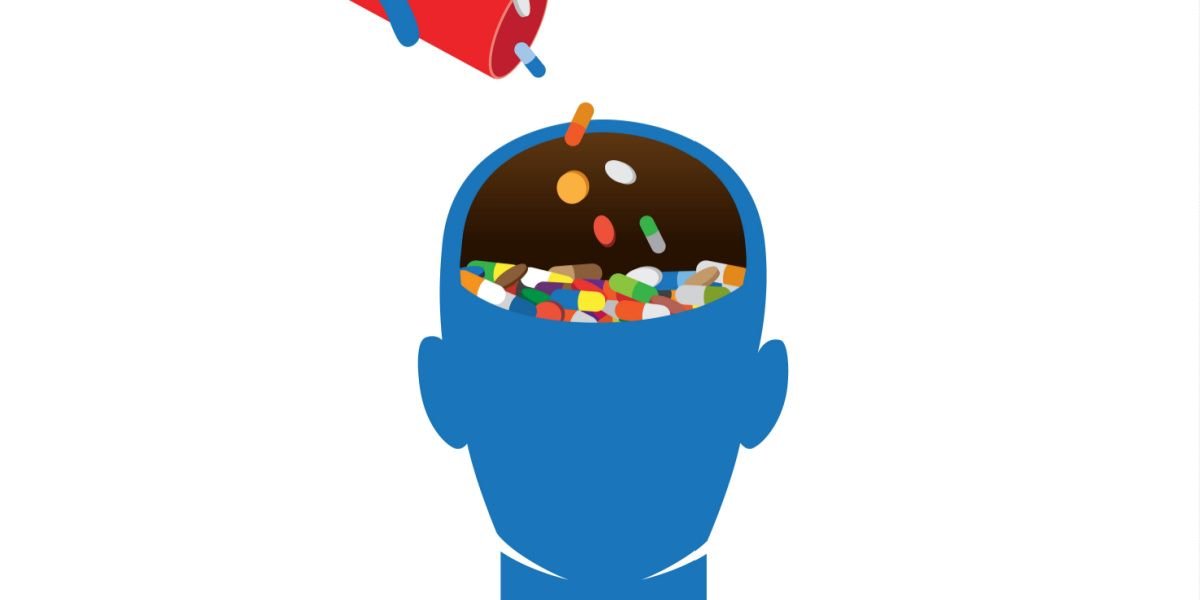Unlike other addictions, the exact causes of behavioral disorders like pornography addiction are hard to pin down. Like most use disorders, causes for porn addiction can often be linked to childhood along with other events in a person's life that mold their attitudes to stimuli like pornography and sex.
This page explores the reasons why porn causes addiction, the brain chemistry involved, the most common causes, and who is most at risk of developing a porn addiction.
- Porn addiction can stem from pre-existing mental health conditions or can be related to past trauma.
- It may also develop from something as simple as stress relief, relationship issues, or escapism.
- Those most at risk of developing a porn addiction include those with a history of addiction, those with a history of sexual abuse, and those with obsessive-compulsive disorder.

Why is pornography addictive?
The American Psychiatric Association has not deemed pornography addiction a diagnosable condition in the most recent Diagnostic and Statistical Manual of Mental Disorders (DSM-5). [1] However, there are various theories about the underlying causes and manifestations of this behavior, such as hypersexual disorders, addiction, or compulsions. [2][3]
Those who experience problematic behaviors around porn use may have developed these issues through a gradual increase in use, which then becomes habitual or compulsive behavior. They may have begun to use porn as a coping strategy, a way to improve or change their sexual behaviors, or as an escape, and go on to develop an addiction. [4]
The brain chemistry of porn addiction
Individuals who frequently use porn may develop a dependence, experiencing a need for increasing use, which can then lead to the forming of an addiction and possible negative impacts on well-being, relationships, and productivity.
The formation of addiction might be linked to brain chemistry, including changes in neurotransmitter levels, particularly dopamine. Dopamine is a neurotransmitter primarily involved in the brain’s reward center and helps to reinforce behaviors that produce a feeling of pleasure. This can include eating, sexual activity, alcohol and substance use, and exercise. Following an enjoyable activity, the brain releases dopamine, which acts as a reward and reinforces the behavior so that it is remembered and repeated. [2][5]
When an individual begins using porn, they may experience a release of dopamine, which can increase their motivation to use porn. However, over time, a tolerance to dopamine may develop, causing the level of pleasure experienced to reduce. [6]
As such, the individual continues to increase their porn use, as they wish to repeat the feelings of pleasure they experienced initially. This can contribute to the formation of addictive behaviors, such as cravings, compulsive use, risky behaviors associated with use, and a loss of control over the amount of use. [2][6]
This may also lead to the development of dependence and withdrawal symptoms when pornography use is reduced or stopped, which can also be a sign of addiction. Research shows that stopping porn use after excessive use can lead to symptoms such as depression, anxiety, insomnia, impaired cognitive abilities, and stress. [7]
The most common causes of porn addiction
Porn addiction is unlikely to have just one cause and may develop due to various contributing factors, which can vary from person to person. Common causes of porn addiction can include:
Pre-existing mental health conditions
Many people who use porn excessively also have a co-occurring mental health condition. It is unlikely that a mental health condition causes excessive porn use, or vice versa. However, as these conditions commonly co-occur, it is believed that they impact one another and can worsen the symptoms of the other. [4]
Mental health conditions that are commonly seen in those with a porn addiction can include: [4][6]
- Depression
- Anxiety disorders
- Mood disorders such as bipolar disorder
- Obsessive-compulsive disorder (OCD)
- Post-traumatic stress disorder (PTSD) and other trauma-related conditions
- Personality disorders
- Attention-deficit/hyperactivity disorder (ADHD)
Past trauma
Traumatic experiences, in particular childhood sexual abuse, have been found to be linked to excessive porn use and compulsive sexual behaviors. Childhood abuse can contribute to an increased risk of porn addiction due to: [8][9]
- Feelings of shame and guilt
- Desensitization to sexual activity
- Ambivalent or blunted feelings about sex
- Distress regulation and coping strategies
- Learned patterns of sexual behavior
Stress relief
Some people may use porn as a form of stress relief, as it can cause a release of dopamine and serotonin, which can contribute to feelings of pleasure and help with relaxation. People may continue to turn to porn use to manage their stress or emotional difficulties, which can lead to the development of dependence and addiction. [4]
Relationship issues
Studies have shown links between relationships lacking in intimacy and sexual contact with increased levels of porn use. This is mostly seen among heterosexual males, who are more likely to watch porn alone, with some studies suggesting that heterosexual females use porn within relationships in which there is a high level of intimacy.[3][10]
This suggests that some people who are lacking sexual intimacy in their relationships are more likely to use porn excessively. This can then cause additional issues around intimacy in the relationship, such as a reduced ability to experience pleasure from sexual activity with a partner, which may then increase their desire to use porn. [3]
Escapism
As can be the case with alcohol and drugs, some people use porn as a coping strategy. This may be to escape from challenges around work, family, relationships, mental health, sexual dysfunction, or other difficulties. If use continues, the individual may depend on porn to escape from their problems, developing addictive behaviors around its use. [2]
Other addictions
Some people with an addiction, such as substance use disorders, may be more prone to developing additional addictions due to various underlying causes. Similarly, they may be more likely to utilize porn excessively to cope with their addiction, thus contributing to the development of a porn addiction. [2][4]
Who is most at risk of developing a porn addiction?
Some people may be at a higher risk of developing a porn addiction and this can depend on several factors. Those who may be more at risk include: [2][4][6]
- People with a history of mental illness
- People with a history of sexual abuse
- People with a history of behavioral or substance use addiction
- People with neurological conditions, including neurotransmitter imbalances or neurodegenerative diseases
- People with a history of obsessive or compulsive behaviors
- People experiencing issues within their sexual or intimate relationships
However, it is important to note that these factors do not always lead to the development of porn addiction, as these risk factors can occur in those who do not use porn excessively.
Warning signs someone may be addicted to porn
There may be several signs that someone is developing addictive or compulsive porn use behaviors, such as: [2][4][6]
- Increasing their use of porn as they no longer experience the same pleasure from their previous level of use.
- No longer experiencing a feeling of pleasure from other previously enjoyable activities.
- Engaging in risky or harmful behaviors, such as using porn at work.
- Experiencing an obsession, compulsion, or preoccupation with using porn.
- Feeling distressed, anxious, or low when not using porn.
- Impairments in romantic relationships, such as no longer experiencing pleasure from sexual activity or partners becoming distressed with the level of porn use.
- Impairments in social or professional functioning because of using or thinking about porn.
- Becoming isolated and choosing to avoid social events to use porn instead.
- inability to quit or reduce pornography consumption.
Treatment for porn addiction
As porn addiction is not listed as a diagnosis, there are currently no evidence-based treatments specifically for this condition and any withdrawal symptoms associated with it. However, treatments are available that can help manage addictive and compulsive behaviors relating to excessive porn use and underlying mental health symptoms. [3][11]
For example, therapeutic approaches can be utilized such as: [2][3][6]
- Cognitive behavioral therapy (CBT): CBT can help individuals understand the underlying causes of porn addiction, recognize and alter behaviors associated with porn use, manage mental health symptoms, and learn positive coping strategies for emotional distress.
- Group therapy: Group therapies can help reduce addictive behaviors and manage mental health, as they can provide a supportive space to share experiences and advice and reduce feelings of loneliness and shame.
- Family or relationship therapy: If porn addiction is impacting familial or romantic relationships, it may be useful to engage in joint therapy sessions, as this can help improve communication and support during treatment, relapse prevention, and long-term recovery.
Additionally, medications may be prescribed to help reduce associated symptoms of pornography addiction, such as depression, anxiety, stress, and compulsive thoughts. This might include antidepressants, mood stabilizers, or anxiolytics. Some research suggests that medications used to treat substance use disorders, such as Naltrexone, may be beneficial in managing porn addiction. [2][11]
Self-help techniques and lifestyle changes may also be beneficial in reducing porn addiction and its associated symptoms. This might include holistic approaches such as exercise, improved sleep, nutritional changes, mindfulness, and increased social interaction. [2]


-guide-detail.jpg?v=1722501997)

-(2)-guide-detail.jpg?v=1722502970)